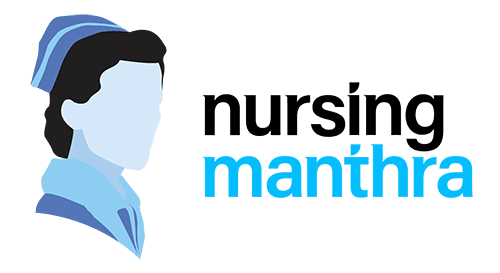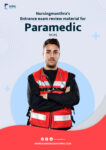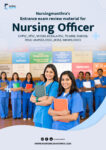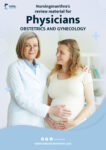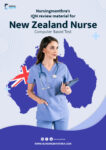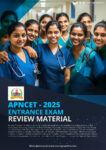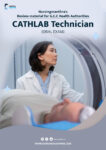By Shincy George – NursingManthra
If you’re an internationally qualified nurse planning to register with the Nursing Council of New Zealand (NCNZ), one of the final and most important steps is the OSCE – Objective Structured Clinical Examination.
In this blog, I, Shincy George from NursingManthra, will explain:
- What the OSCE is
- Where the exam is conducted
- How the stations are structured
- Example scenarios (mental health & deteriorating patient)
- Orientation course, coaching & costs
- Travel, accommodation and practical tips
My aim is to give you a clear, real-world picture so you can plan your New Zealand journey confidently.
1. What Is the OSCE in New Zealand?
The Objective Structured Clinical Examination (OSCE) is a practical skills exam conducted after you clear the theory exam for New Zealand nursing registration.
Through OSCE, the Nursing Council checks whether you can:
- Apply your knowledge in real clinical situations
- Communicate safely and professionally
- Use New Zealand standards of nursing practice
- Demonstrate safe medication, assessment, and decision-making
It is not just about remembering answers – it is about how you think, act and talk as a registered nurse in New Zealand.
2. Where Is the OSCE Conducted?
The OSCE is conducted in Christchurch, at a specialised Nurse Simulation & Assessment Centre.
From your description:
- On the ground floor, there is hospice care.
- On the first floor, you’ll find the OSCE exam centre and simulation rooms.
You will be guided to:
- A waiting area
- A corridor with multiple stations arranged
- Staff and exam coordinators will direct you from one area to the next.
Family members and friends cannot stay inside with you, so they usually wait elsewhere in the city (cafés, malls, etc.).
3. OSCE Structure: Stations & Timing
The OSCE is organised into multiple stations (commonly structured as 8–10 stations, depending on the current blueprint). You and other candidates move from station to station in a circuit.
For each station:
- Total time: around 10–12 minutes
- 2 minutes – Reading time outside the station
- 8–10 minutes – Inside the station to perform the task
During reading time, you must:
- Stand outside the door
- Read the scenario/task carefully
- Plan how you will introduce yourself, what you will assess, and what actions you will prioritise
Once the bell rings, you enter, perform hand hygiene, introduce yourself, and start your assessment or care.
Each station usually has:
- An actor playing the patient or relative
- A nurse evaluator/examiner silently observing and marking you with a checklist
You are assessed on:
- Clinical skills
- Communication & empathy
- Prioritisation & safety
- Documentation / handover quality
4. Example: Mental Health / Communication Station
One of the key stations is often a Mental Health / Therapeutic Communication station.
Let’s walk through a sample scenario based on the pattern you described.
Scenario Outline
- You are the nurse in a medical ward.
- A patient admitted with pneumonia has pressed the call bell.
- When you enter, the patient looks anxious, pacing or walking around the room.
- He says:
- “I want to go home.”
- “My sister isn’t taking the phone.”
- “I’m scared when I see this IV cannula.”
- “Can I take my anxiety medicine? Will there be side effects?”
What You Should Do
- Before entering
- Use hand rub – proper hand hygiene is compulsory every time you enter and leave.
- Introduction & ID check
- Knock and enter.
- Greet the patient: “Hello, my name is ___, I’m the nurse looking after you today.”
- Confirm identity with name, date of birth, and wristband.
- Acknowledge feelings
- “I can see you’re very anxious; I’m here to listen and help.”
- Use open questions, maintain eye contact, calm tone.
- Assess mental state & situation
- Ask about:
- Why he wants to go home
- What exactly he is afraid of
- Any past history of anxiety, panic attacks, depression
- Sleep, appetite, support system
- Ask about:
- Address medication concerns
- Check the medication chart before promising anything.
- Explain in simple language:
- When the anxiety medicine is due
- Common side effects
- That you will ensure it is given safely as prescribed.
- IV cannula concern
- Assess the IV site: redness, swelling, pain, leakage.
- Explain:
- Why the cannula is needed (for antibiotics, fluids, etc.)
- When it can be removed safely
- How you will protect the site and observe for complications.
- Discharge anxiety & family phone issue
- Reassure that discharge time can be reviewed with the doctor if needed.
- Offer options:
- “Would you like me to help call your sister?”
- “We can involve the social worker if you’re worried about going home.”
- Close the station
- Summarise what you did and what will happen next.
- Perform hand hygiene again before leaving.
- If documentation is part of the station, write concise notes.
This station is checking your mental health assessment, therapeutic communication, and ability to educate & support an anxious patient.
5. Other Common OSCE Station Types
The exact blueprint can change, but from your notes and typical NZ OSCE patterns, stations often cover the following areas:
1. Professional Responsibility
- Documentation
- Legal and ethical responsibilities
- Checking orders, consent, professional boundaries
- Handling concerns about unsafe practice (e.g., nurse not reading tablet properly)
2. Basic Life Support (BLS)
- Found unresponsive patient
- Call for help, start CPR on a manikin
- Use of AED according to guidelines
- Emphasis on safety, sequence and communication
3. Wound Dressing Station
- Assessment of wound (appearance, drainage, pain)
- Aseptic or clean technique
- Infection control steps
- Explanation to patient and proper waste disposal
4. Medication Management
Examples based on your notes:
- Ibuprofen start / side effects
- Check prescription, allergies, right patient, right dose, right route, right time
- Explain side effects: gastric irritation, bleeding, kidney function issues, taking with food, etc.
- Correct any unsafe behaviour like nurse not reading from the tab / e-chart.
- Morning medications, food & sleep
- Check if the patient slept at night, if food was given or not, how meds may affect sleep or pain.
5. Handover / HSEA / ISBAR
- Structured handover from one nurse to another or to a doctor.
- Use of HSEA / ISBAR framework:
- Identify / Introduction
- Situation
- Background
- Assessment
- Recommendation / Action
6. Rest Home / Shift Scenario
- Managing care for an older adult in a residential setting.
- Prioritising tasks at the start or end of a shift.
- Recognising risks like falls, pressure injuries, confusion.
7. Pain Score & Nursing Care Plan
- Use of a valid pain scoring tool (0–10 scale or descriptive scale).
- Developing a care plan that includes:
- Assessment
- Nursing diagnosis / problem
- Goals
- Nursing interventions
- Evaluation
8. Deteriorating Patient Management
This is often a full station by itself, and it’s very important. Let’s see the example you gave.
6. Deteriorating Patient Station – Gastric Ulcer Case
Scenario Outline
- Patient with gastric ulcer, discharge planned for 2 pm.
- Suddenly, the call bell rings.
- Patient says:
- “I feel light-headed.”
- Possibly also chest heaviness, discomfort, or unusual symptoms.
How to Approach
- Immediate safety & hand hygiene
- Hand rub before contact.
- Check if the patient is at risk of falling, position them safely.
- Quick assessment
- Airway, breathing, circulation.
- Ask:
- “What exactly are you feeling?”
- “Do you have chest pain, heaviness, shortness of breath, jaw or arm pain?”
- Vital signs
- BP, heart rate, respiratory rate, oxygen saturation, temperature.
- Example: HR 46 (bradycardia), other vitals initially normal.
- Recognise red flags
- Light-headed + chest heaviness + HR 46 → possible cardiac problem.
- This is not a simple gastric ulcer issue anymore.
- ECG & comparison
- Attach ECG machine if available, obtain rhythm strip.
- You might be given an ECG showing sinus bradycardia ~40 bpm.
- Compare with old ECG if present.
- Immediate interventions
- Reposition patient (semi-Fowler’s or as appropriate).
- Ensure airway patency, administer oxygen if protocol allows.
- Prepare equipment (kidney dish, suction if needed).
- Escalate using structured communication Call the doctor / rapid response team and use a structured format such as ISBAR:
- I – “I’m Nurse ___ on Ward ___. I’m calling about Mr. X, a gastric ulcer patient planned for discharge today.”
- S – “He has just become light-headed, complaining of chest heaviness.”
- B – “Admitted for gastric ulcer, no previous cardiac history documented (or mention if there is).”
- A – “Current vital signs: HR 46, BP /, SpO₂ __%, RR __. ECG shows sinus bradycardia around 40 bpm.”
- R – “I recommend urgent review; please come to assess him and advise further management.”
- Documentation
- Document:
- Time of deterioration
- Assessment findings
- ECG finding
- Actions taken
- Whom you informed and at what time
- Document:
This station checks your ability to recognise deterioration early, prioritise assessment, take safe initial actions, and communicate clearly with the medical team.
7. Orientation Course (OPC) Before OSCE
Before the OSCE, candidates attend a two-day Orientation and Preparation Course (OPC).
In this course, you will:
- Learn about New Zealand nursing culture and expectations
- Understand local policies, documentation style and medication practices
- Get familiar with the simulation environment and equipment
From your notes:
- OPC is usually conducted on Monday and Tuesday.
- The OSCE exam days are commonly on Wednesday, Thursday, Friday (exact days may vary depending on scheduling).
- Orientation fee is around 500 NZD (this may change, always check official information).
8. Private OSCE Coaching & Training
Many nurses take additional OSCE training from private academies or agencies before the exam.
From your observations:
- Some centres offer 3-day offline OSCE training for around 850 NZD.
- Training may include:
- Practice of mental health, BLS, wound dressing, medication, handover, and deteriorating patient stations
- Full mock OSCE with feedback
- Tips on time management and New Zealand-style communication
These training programmes are not run by the Nursing Council. They are private and completely optional, but they can help boost confidence.
Always:
- Confirm the latest fees and schedule
- Check reviews
- Ensure the content is updated to the current OSCE format
9. Travel, Visa & Accommodation – Christchurch
Since the OSCE is in Christchurch, you must plan:
- Visit visa (if required)
- Flight tickets to Christchurch
- Local transport and stay
From your experience:
- Accommodation near the exam centre for 1 week can cost around 400–500 NZD in shared settings.
- Some places may charge 80–100 NZD per day including food.
- After the initial week, ongoing accommodation could be around 500 NZD per week, depending on the facility.
- Some agencies or course providers also help arrange stay for their students.
Budget for:
- Stay (room + food)
- Transport (bus, taxi, Uber)
- Extra days if your OSCE and orientation dates are not back-to-back with your flights.
10. Key Tips for Passing the OSCE
To summarise, here are some practical tips:
- Understand the station timings – 2 minutes reading + 8–10 minutes performance.
- Never forget hand hygiene – every entry and exit.
- Always do an ID check before any assessment or medication.
- Use calm, empathetic communication, especially in mental health and anxious patient scenarios.
- Follow the rights of medication strictly and explain common side effects in simple terms.
- Use ISBAR/HSEA for all handovers and doctor calls.
- In any deterioration, think ABC / ABCDE, act early, and document.
- Practice full mock OSCE circuits with timing at least once or twice before the real exam.
11. Final Words from Nursing Manthra
The New Zealand OSCE can feel stressful, but with the right knowledge, practice and mindset, you can absolutely pass it.
As NursingManthra, my mission is to guide nurses like you through licensing processes around the world with clear explanations and honest information.
If you need:
- Guidance on New Zealand nursing registration
- Help planning your OSCE preparation
- Support in understanding fees, training, travel and accommodation
you can reach out to NursingManthra.
With love and prayers,
Shincy George
NursingManthra
